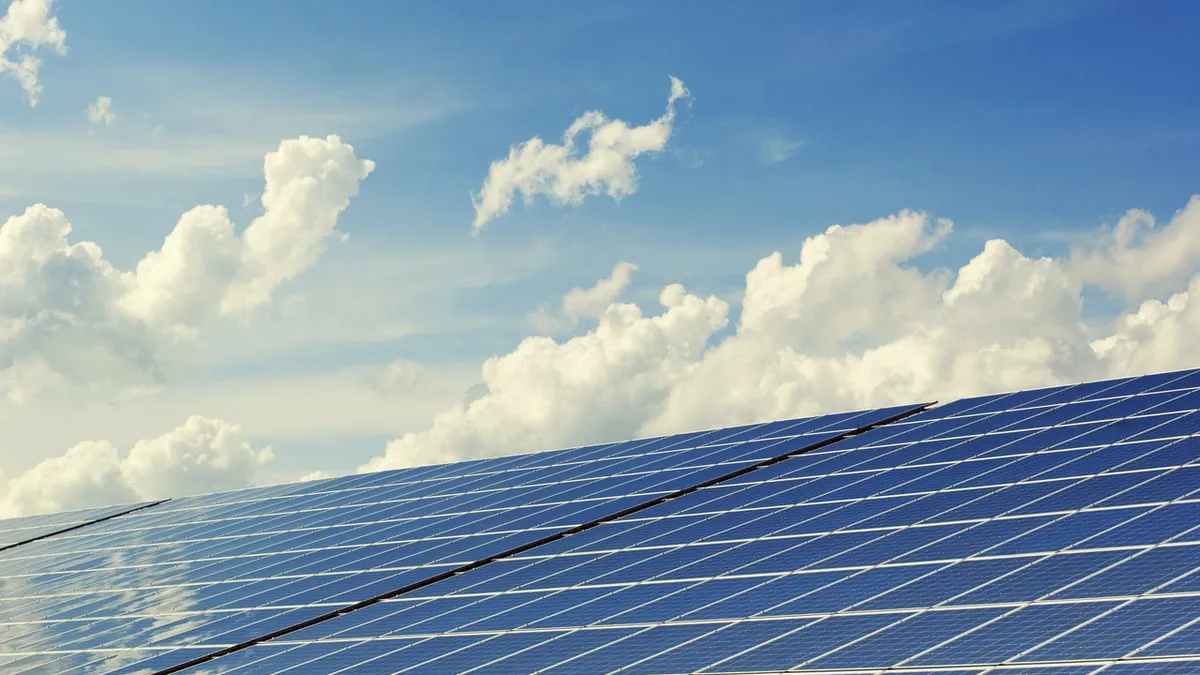Imagine that you’ve been working in the same industry for 20 years – and you’re more excited today about the potential that your industry has to change the world – than when you started in the industry two decades ago.
As our world faces an omni-crisis consisting of multiple challenges, including the COVID-19 virus, confronting systemic racism, climate change, and numerous technological changes, there’s one person who sees his work and the company for which he works as a means to making the world a better place for all. His name is Michael Lamb, who serves as senior vice president, transmission systems, at Xcel Energy.
I had the opportunity to interview Michael for the Ulteig Energy & Infrastructure Podcast series, during which Michael shared his passion for clean, reliable, affordable energy and the transformational power it can have in improving our lives. We were joined by Doug Jaeger, President and CEO of Ulteig, who provided additional perspective on how renewable energy is converging with other Lifeline sectors, such as transportation and water, in creating change.
One of the key takeaways from my interview with Michael is that all of us involved in the power industry – power companies such as Xcel Energy, engineering firms such as Ulteig, and construction firms that build our nation’s infrastructure – are on the front lines of immense change. In embracing a cleaner energy future, , where we seek out a mix of renewables, and cleaner energy sources, as well as better systems to transmit and distribute it, we are all having a powerful impact on the daily lives of people and businesses and on our world’s environment.
As Lamb explained during our conversation, “We all want the same thing: reliable, secure, affordable, competitively priced and environmentally clean energy.” With incredible advances in new technology, everyone involved in the power industry has the potential to make a difference and have a real impact on our nation’s energy system.
In fact, Xcel Energy is the first major U.S. power provider to announce a goal of reducing carbon emissions 80% (from 2005 levels) by 2030, with a vision of providing 100% carbon-free electricity by 2050. And the company is well on its way, having reduced carbon emissions 44% in 2019, a record ten percent drop over 2018.
Xcel Energy, like most companies, is not immune to the economic effects of the COVID-19 pandemic. But if there’s a silver lining behind this crisis it’s that Xcel Energy and its people have learned to be even more agile and flexible, both in how the company serves customers and manages its workforce. It’s that kind of agility that will be needed in the years to come as our industry embraces new ways of thinking and new technology to achieving more affordable, reliable, secure and cleaner energy.
However, as noted by Lamb in the podcast, achieving the nation’s clean energy goals is not going to be easy. Why? It comes down to mindset: changing isn’t easy.
“Change is hard,” Lamb said. “Our nation’s electrical grid was labeled one of the most important technological marvels of the 20th Century by the National Institute of Science. However, it’s 75-year-old technology.”
Jaeger added the U.S. electrical grid was originally built for the transmission of electricity over short distances – it wasn’t designed to meet the growing reality of clean energy, where much of the nation’s wind and solar is produced primarily in the Midwest and the West and sent over multiple state lines to the Coasts where it is most needed.
Looking ahead, Lamb said the U.S. power industry needs to continue to innovate, in order to produce the clean, reliable energy we all want, while keeping customer bills low. He sees the following changes necessary to achieve more affordable, reliable and cleaner energy:
-
Modernize electrical grids throughout the U.S. by upgrading the distribution system to increase 2-way power flows and increasing the ability for generation to be connected to it.
-
Invest in micro-grids that allow portions of the main grid to be isolated for security purposes.
-
Invest in scalable battery storage that is be critical to making renewable energy more reliable
-
Invest in clean energy infrastructure to support growth of electric vehicles, which will eventually be the predominant mode of transportation systems in the years to come.
-
Explore new fuel sources, such as hydrogen, which could be moved through existing pipeline structures, and advanced nuclear.
For many of these changes to happen, public policy at the state and federal levels needs to be reshaped, which includes more state and federal funding for renewable energy and grid modernization, and mandates that endorse clean, renewable energy.
In the meantime, Xcel Energy, like many other companies involved in our industry, is forging ahead with what it can have an impact on today. It’s Steel for Fuel program, the nation’s largest multi-state wind expansion, for instance, is an important step towards achieving its carbon reduction goals.
“Our vision of delivering 100% carbon-free electricity by 2050 is both an ambitious and an aspirational goal,” said Lamb, “we need new technology to develop and we are confident that it will.”.”
The Ulteig Energy & Infrastructure Podcast spans Ulteig’s Lifeline Sectors® of Power, Renewables, Transportation and Water. It offers thought-provoking and engaging conversations with key industry stakeholders on technology, innovation, policy and funding.
Click here to listen to the current podcast or download it through Apple, Google Play, or Spotify.










